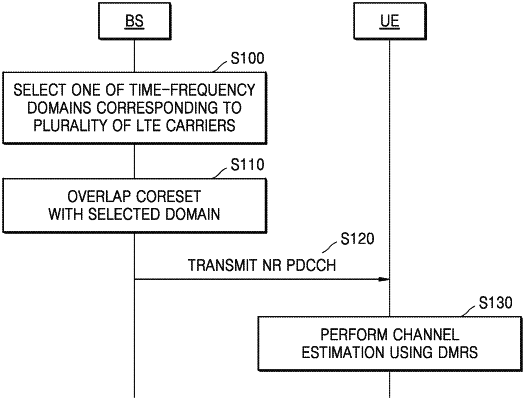| CPC H04W 16/14 (2013.01) [H04L 5/0048 (2013.01); H04L 25/0224 (2013.01); H04L 27/2607 (2013.01); H04L 5/0005 (2013.01)] | 15 Claims |

|
1. A wireless communication system comprising:
a base station configured to support dynamic spectrum sharing (DSS) between a first network and a second network; and
a user equipment configured to communicate with the base station based on the first network,
wherein the base station is further configured to puncture allocation of a first reference signal when performing resource allocation on a first control channel and when a first resource to be allocated to the first reference signal corresponding to the first network overlaps with a second resource allocated to a second reference signal corresponding to the second network, and
wherein the user equipment is further configured to receive the first control channel and perform channel estimation for the first network based on the allocation of the first reference signal that has been punctured,
wherein the base station is further configured to allow at least two time-frequency domains among a plurality of time-frequency domains to overlap with a time-frequency domain allocated to the first control channel of the first network when performing the resource allocation, the plurality of time-frequency domains respectively corresponding to a plurality of carriers of the second network,
wherein the base station is further configured to puncture the first reference signal on the at least two time-frequency domains according to a same first puncturing pattern when performing the resource allocation, and
wherein the base station is further configured to allocate, according to a second puncturing pattern, the first reference signal to a time-frequency domain of a guard band between the at least two time-frequency domains.
|